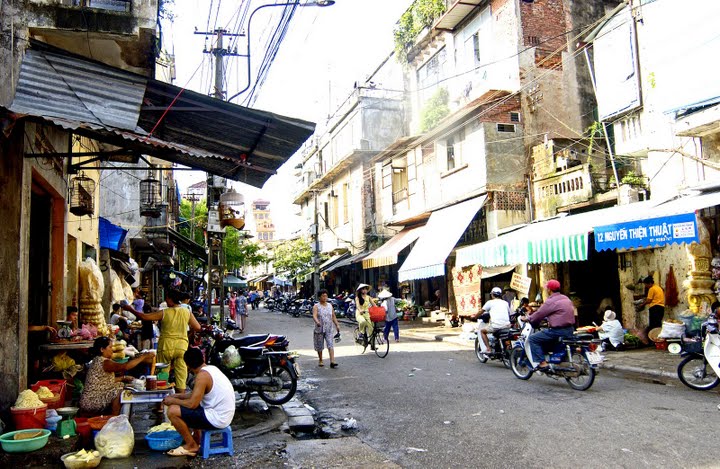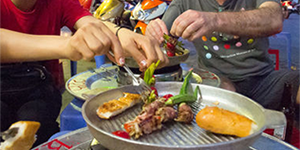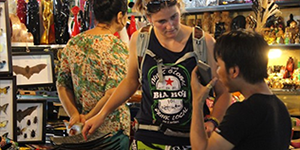Hanoi Streets

Nguyen Thien Thuat is 216 meters in length bridging the street of Hang Khoai to the street of Hang Chieu behind the market of Dong Xuan-Bac Qua. In the past, the road belonged to the hamlet of Tien Trung, Hau Tuc ward, Tho Xuong district. Nowadays, it belongs to Dong Xuan ward, Hoan Kiem District.
During the French administration of Indochina, the street had the name of Rue Lepage. As Rue Lepage was the name of a fiber factory at the nearby current- Bac Qua market. The factory later was out of order and the area became the football course known as the “Lo pa area” as the French name was pronounced in the local language.
To be in more details, the fiber firm of Bourgouin-Meiffre got the license of building the fiber factory known as Bac Qua factory in 1892 . During the year of 1918, the factory went through merge and acquisition. The factory and its storage were demolished leaving an empty space. The 20s and 30s of the 20th century saw the boom of Western influence and its company was the wave of sport and exercise. Bac Qua area became an exercise and matching pitching known as “Stade Lepage”. During this time, despite being a street, there was barely a house in Nguyen ThienThuat Street. The route to Hang Chieu street was only a narrow alley. People tended not to frequent the street at night.
After the revolution, the street was named as Tan Thuat-the official title of a national hero- Nguyen ThienThuat. Nguyen ThienThuat used to be a mandarin in the last dynasty of Nguyen. He disobeyed the royal order to continue the war against the French colonizer. Nguyen allied with other mandarins to wage a guerilla war against the French occupation. The movement caught on like a wildfire causing French trouble in the North of Vietnam during the end of the 19th century.




